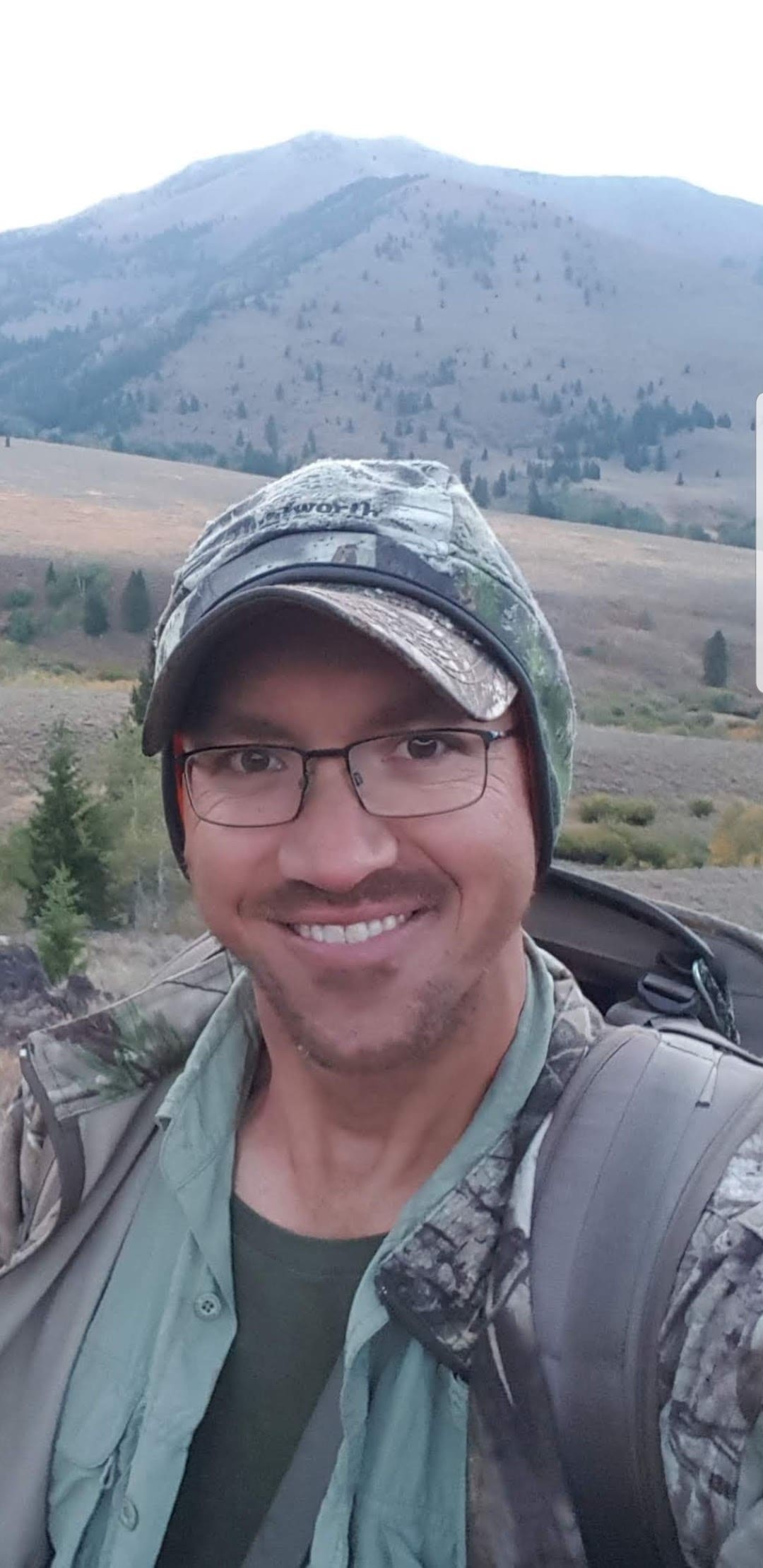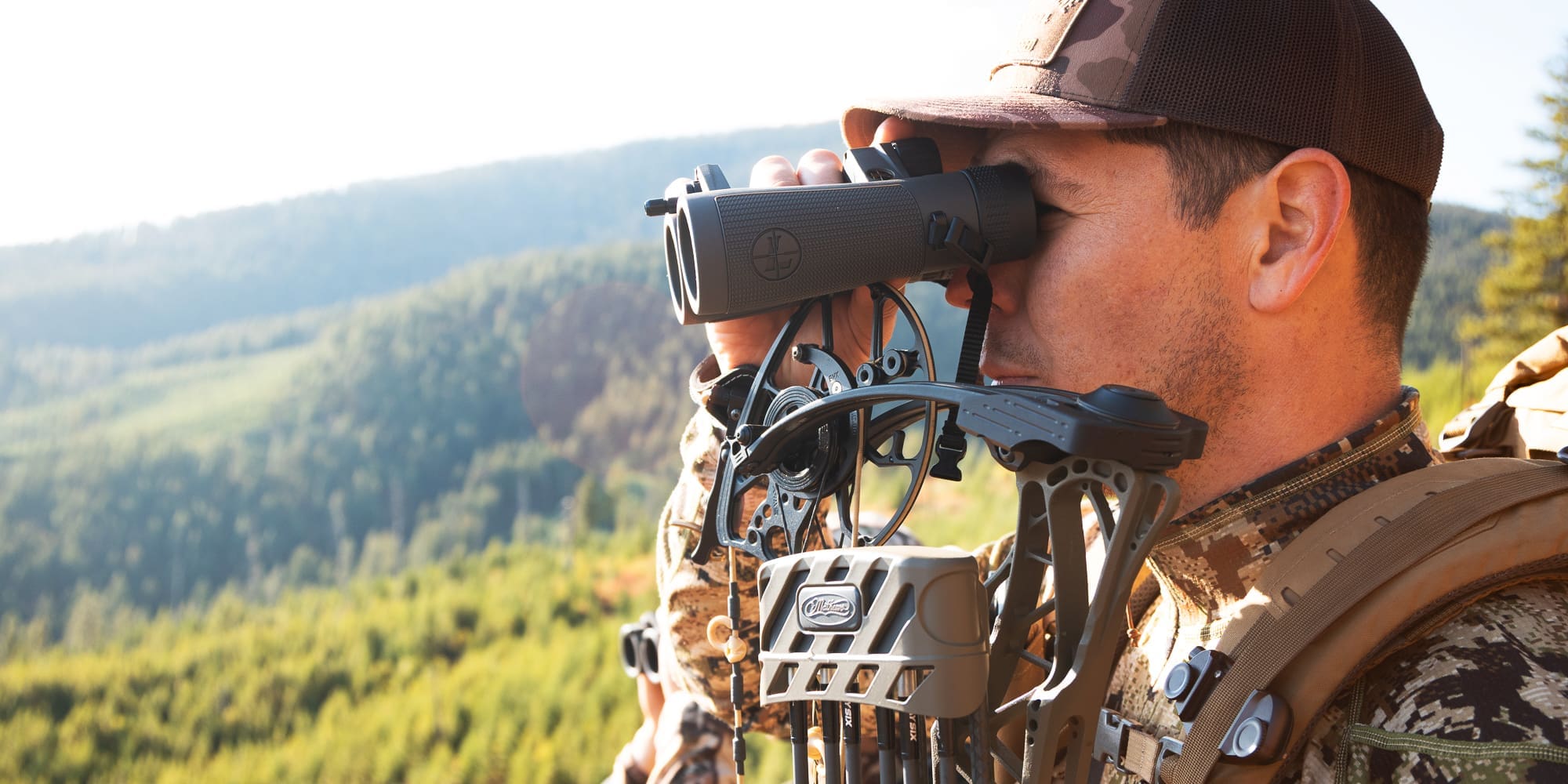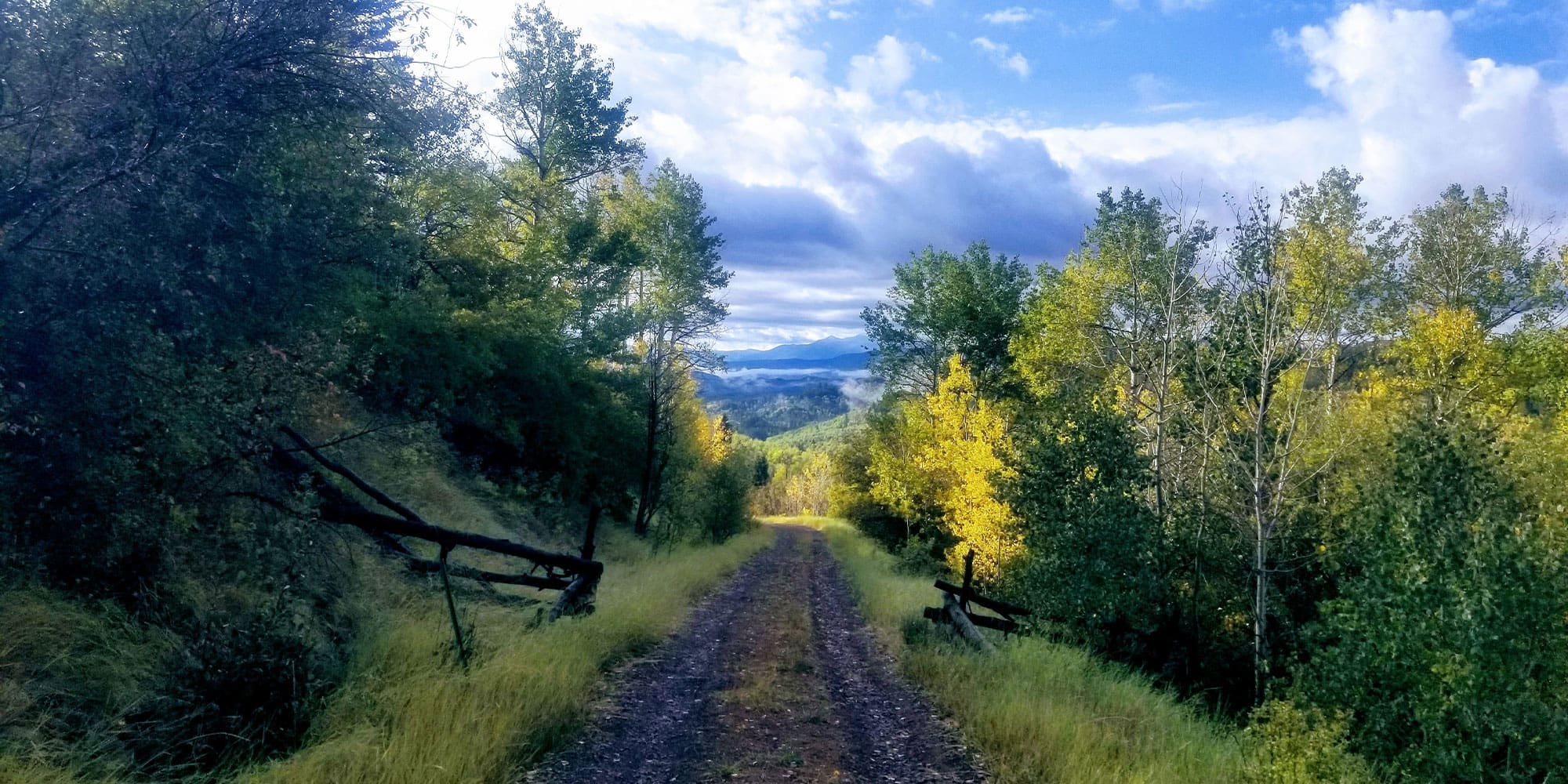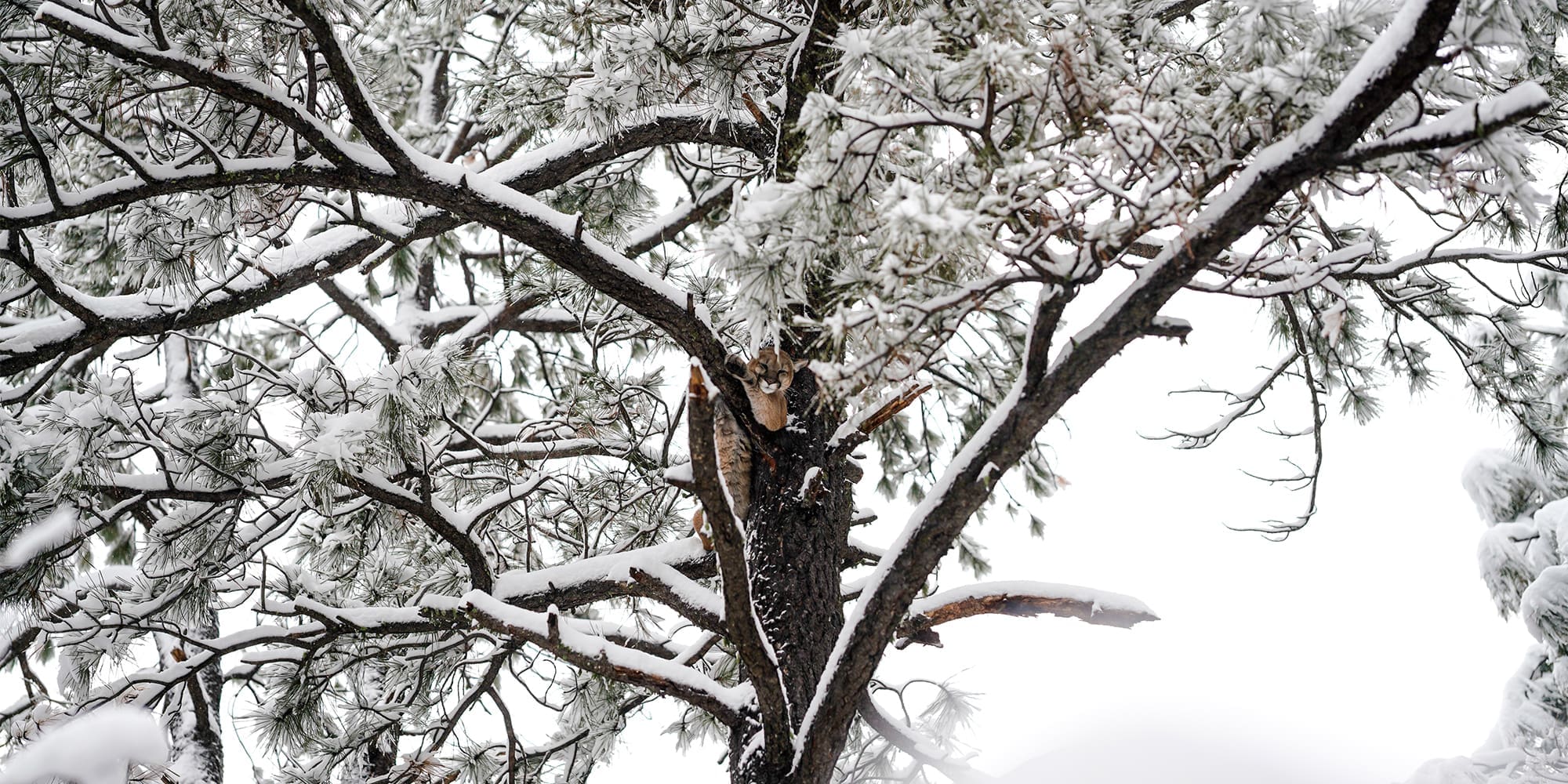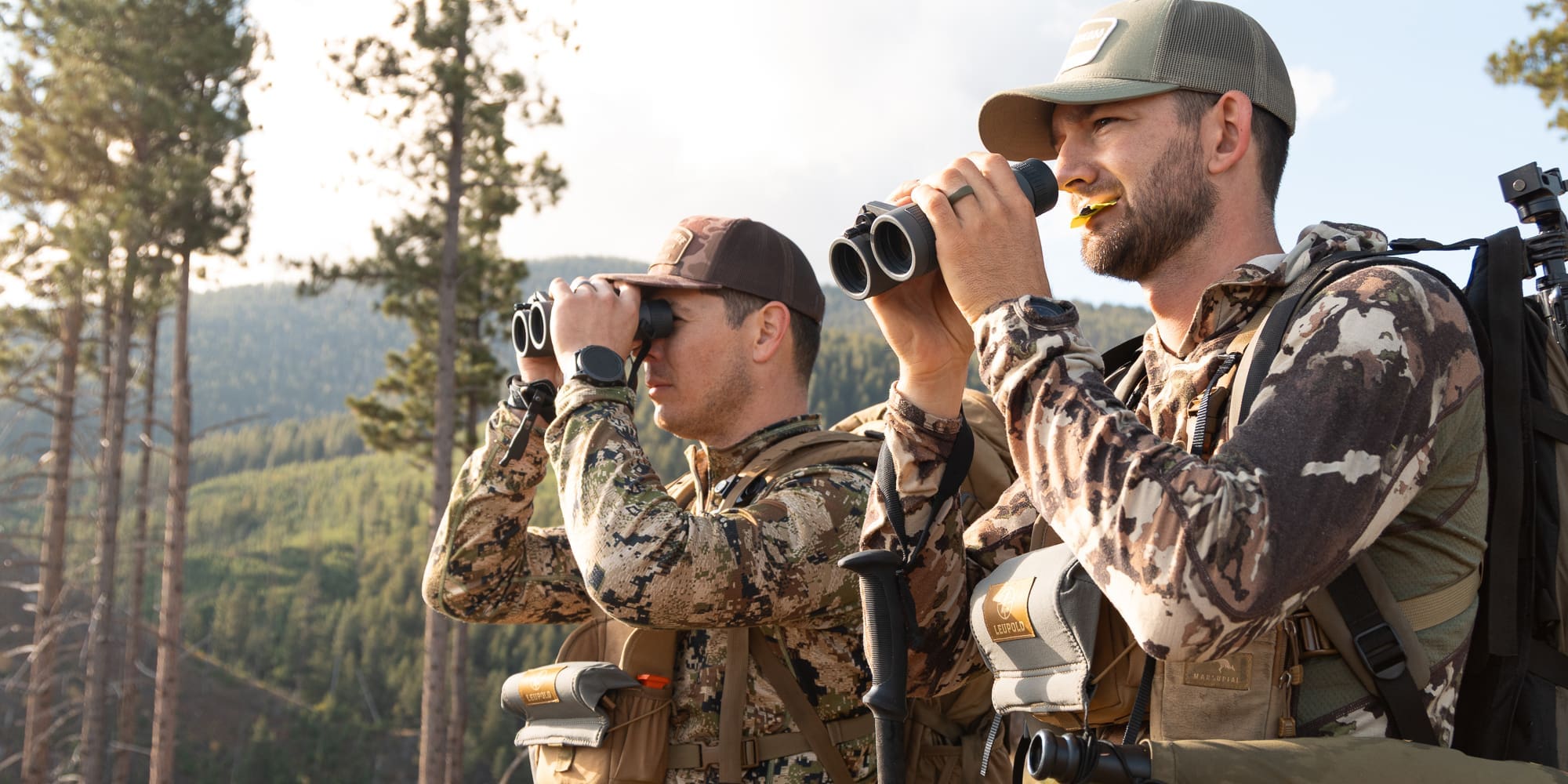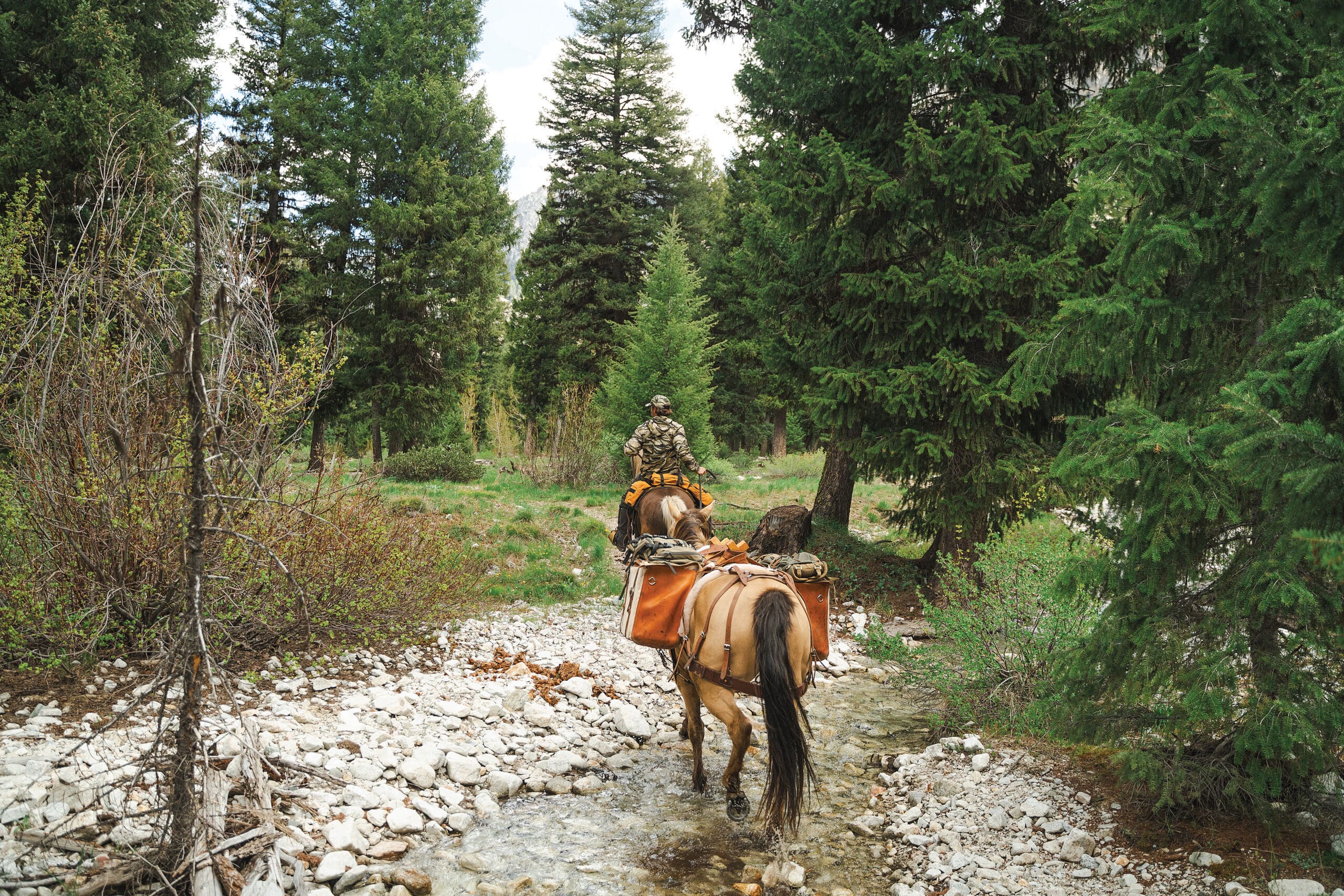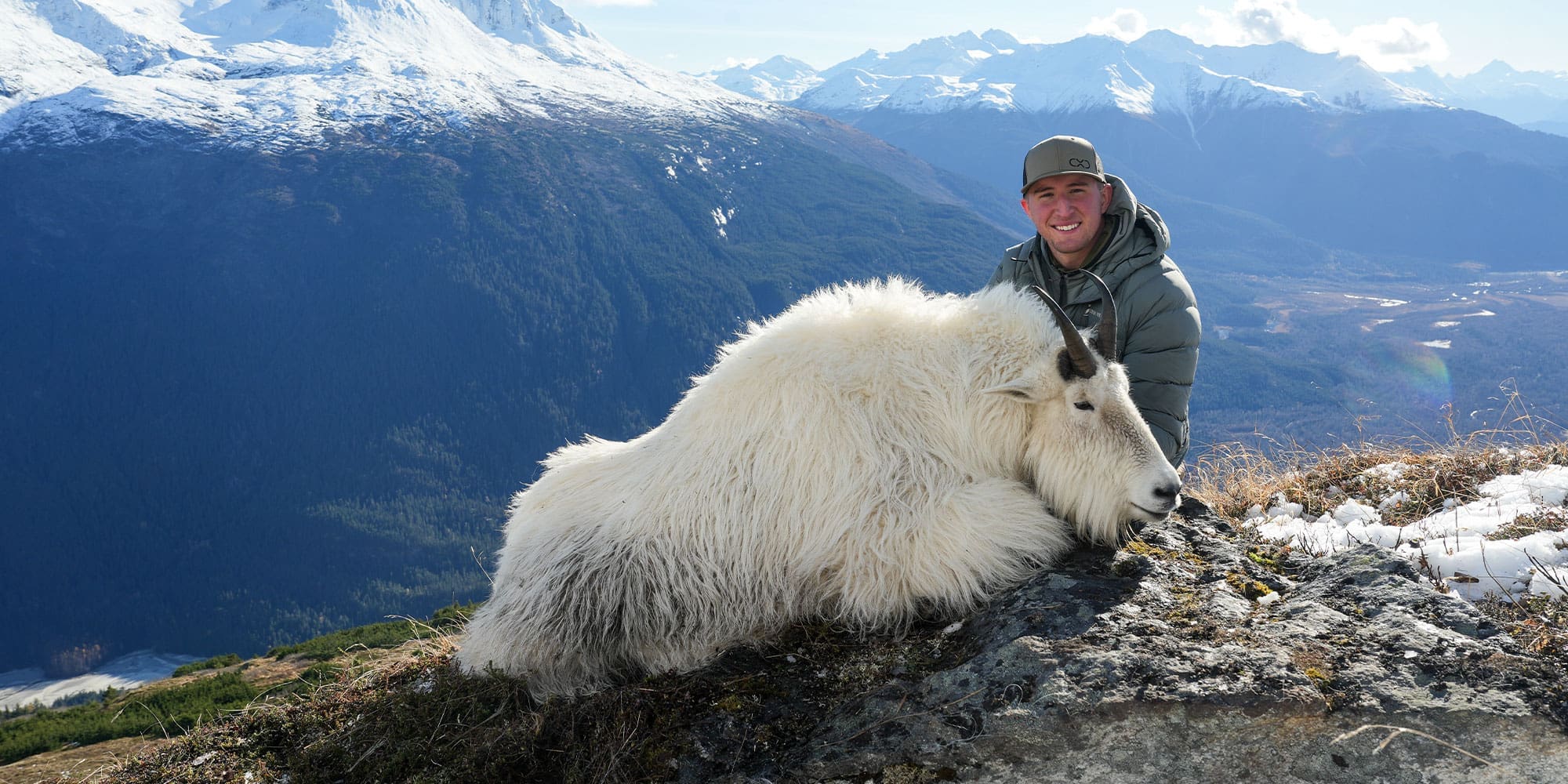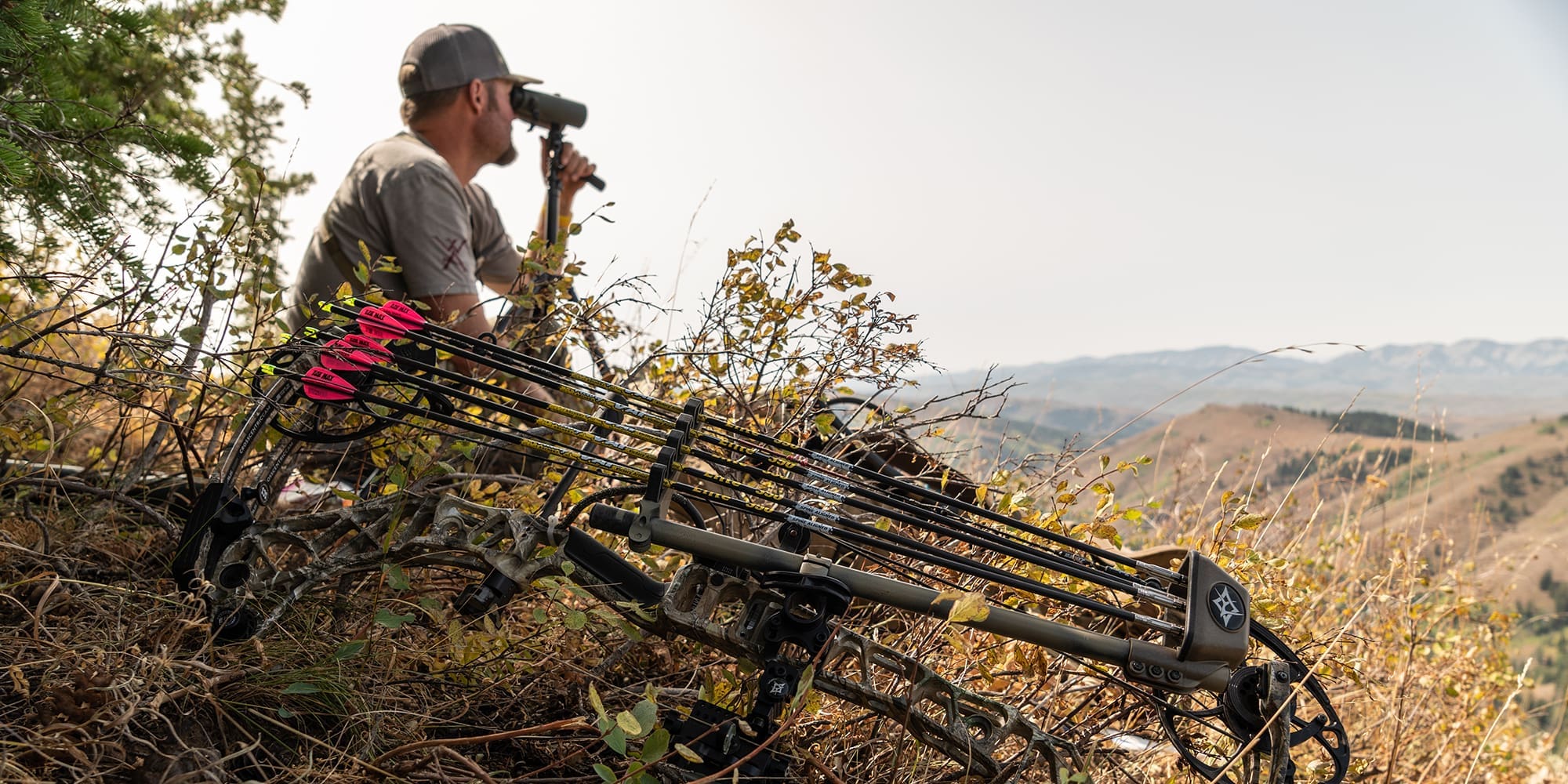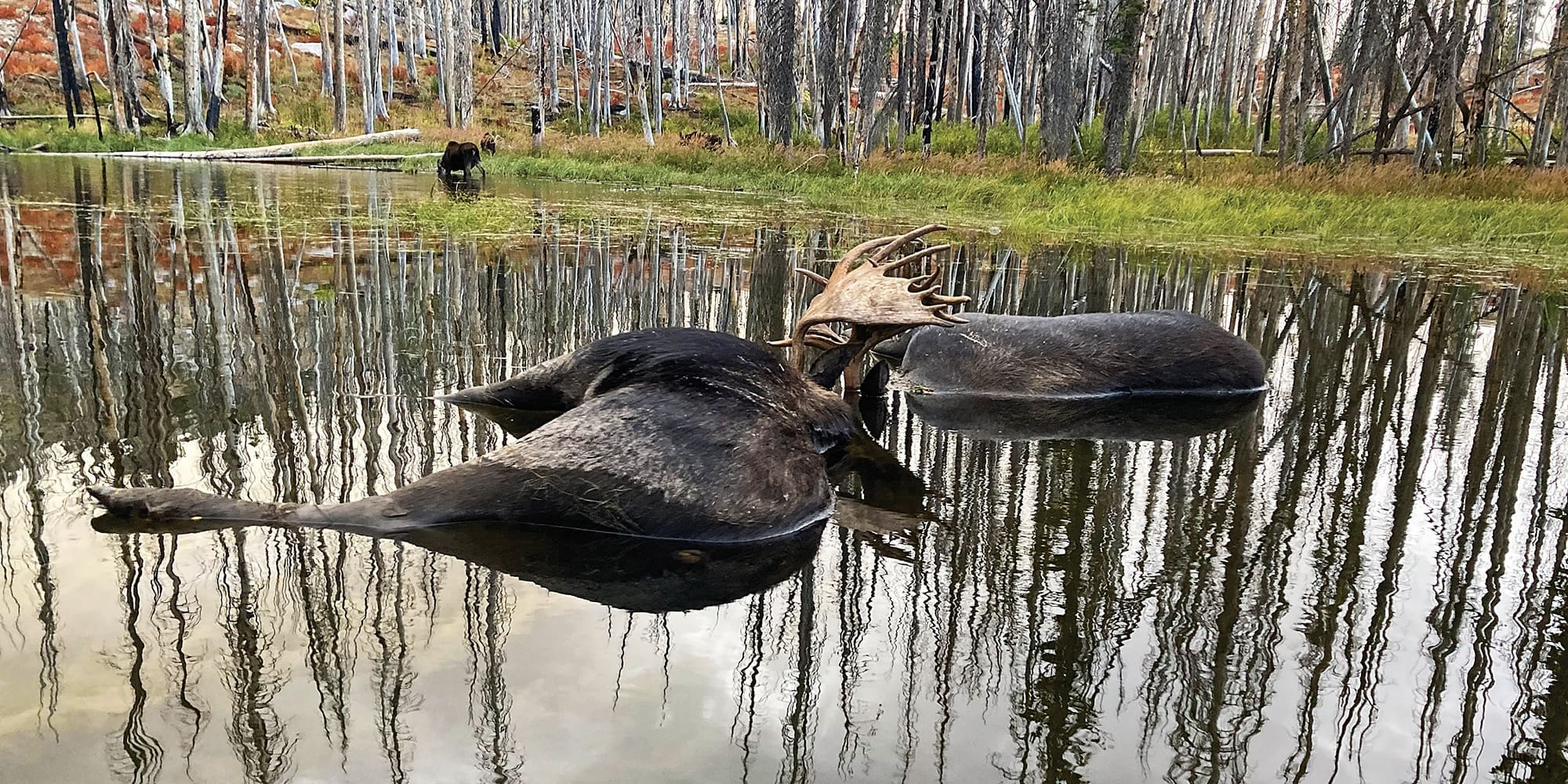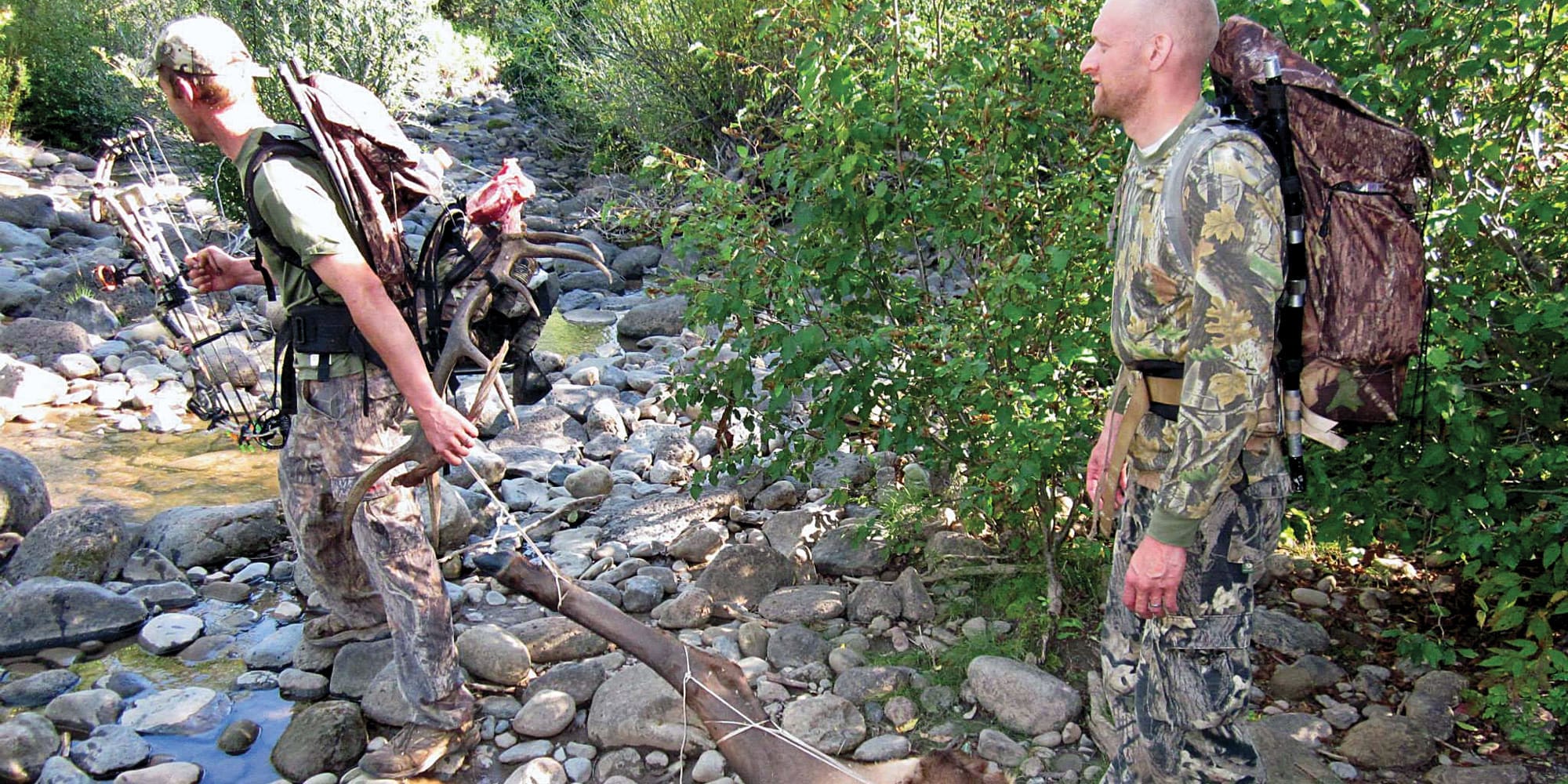
NOTICE: Certain links on this post may earn a commission for Western Hunter Magazine from Amazon or our other affiliate partners when you make a purchase. Thank you for your support.
How to Drag Out an Elk
Several years ago I found myself in a hidden drainage surrounded by bugling bulls. I’ve since come to call this particular drainage the Elevator Shaft, as three of its sides are almost vertical. It was my first time hunting there, and there were so many bulls sounding off that I was all but certain I would drag out Elk meat that evening.
Given that I was four miles from the gated trailhead, I presumptuously began developing an exit strategy. Of course, I knew our group of four would eventually be able to load our packs and ethically remove an elk from that distance, but it would come at a cost.
In my experience, even a raghorn bull will take several heavily loaded packs to be removed from the kill site.
Depending on the distance from the road, this can take a single fit hunter several days, or several fit hunters an entire day. While I'm always excited at the opportunity to pack out a friend's elk, to be frank, I'd rather spend more time finding one for myself. My friends share that sentiment. With that in mind, and what I figured was imminent success in the near future, I came up with a plan to minimize the manpower and time that it would take to haul out an elk. I call it the knock-down, drag-out method.
Origins
I grew up hunting whitetail deer in northern Wisconsin. Between my dad, my brother, and myself, we were very blessed to take multiple bucks each year on highly pressured public lands. One reason for our success was simply going farther in than most others would. Distant oak ridges or far away clear cuts made for abundant opportunities at nice bucks. But they also made for long drags back to the truck.
In those days, quartering a deer wasn't an option in Wisconsin. Our method? A strong, 1-2 foot stick and four feet of rope. The stick serves as a handle with the rope connecting it to the buck’s rack. If two of us were available to pull, the stick would be about three feet long and we’d each grab a side and haul. It’s a very common method to remove a deer from the woods.
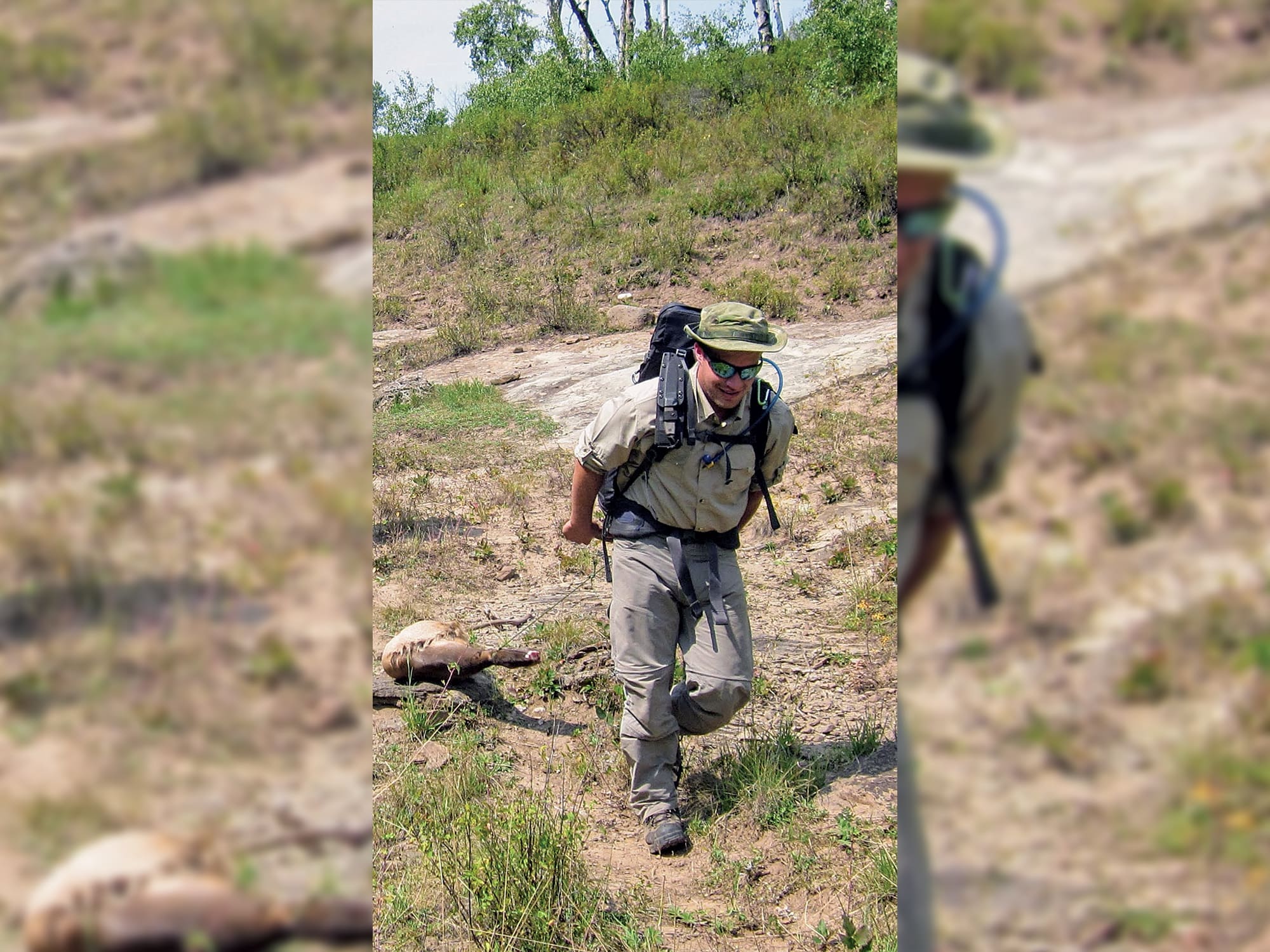
Obviously, this method won't work for an adult elk in nearly any instance. The one exception is a snow-covered mountain where there's a clear, downhill slope to the road. I know of hunters who have done exactly that. Gravity might be a strong foe when you're working against it, but it makes a great friend when you're able to put it to work. Many hunting areas in the West are uphill from the trailhead. Roads often follow the creek bottoms, with trails weaving for miles up the mountainside. This was the exact scenario I found myself in that first night in the Elevator Shaft.
As you may have guessed, my optimism was ill-placed. I guess I tend to count chickens before they hatch. I did call in a bull that night, but misjudged the yardage and packed nothing but my heavy heart and a lighter quiver back to camp. Ashamed, I told the guys about the secret honey hole, and two of us made a plan to be back in the Shaft bright and early. Well, I was in for another letdown.
Knock-Down
Whoever came up with the expression that “silence is golden” surely wasn’t elk hunting during the rut. You can imagine how discouraged I was when after a few hours of daylight we hadn’t heard one bugle. The night before there were nearly a dozen bulls there, and now, they all seemed to have vanished. There wasn’t so much as a peep all morning. Finally, just as we were about to move on, we saw a herd off in the distance. We quickly closed the gap and made a play. Maybe I’d be able to implement my new technique after all? Nope, strike two.
This time it was my buddy, Clint, who missed. The bull screamed into range, but in the heat of the moment, he forgot to adjust his single-pin sight and at 24 yards launched the arrow over its back. I couldn’t chastise him too harshly, since the night before I had committed a similar error. Dejected, I hustled up the mountain to radio our buddy John and see if he had any action that morning. “John, do you copy?... John, do you copy?”

The scratchy response was hard to make out, “Buh... squelch… Dow… squelch… Buh… squelch… Down.” “John, you’re hard to copy, repeat your last transmission.” “Squelch… BULL… squelch… DOWN!” As it turned out, during the night, the entire herd had simply shifted over one ridge. John had wisely chosen to pass on hunting the Elevator Shaft and happened upon a goldmine of his own. He, unlike Clint and I, shot true, and an hour later, the three of us stood over John’s first bull, a nice 5x5.
As we took pictures and relived the story, I unveiled my plan to efficiently pack this elk out in one trip. They each looked at me with puzzled faces. We had all packed elk together before and in each case, the packing alone took at least a full day away from our hunting efforts. “If this works,” I told them, “I intend to be back in here in time for an evening hunt.” So, we got to work.
Before I get into this method, let me just say that if you’ve never processed an elk before, do yourself a huge favor and watch some YouTube videos on how to do it. Google “gutless method,” for instance, and take notes, because just quartering an elk on the side of a mountain is a real job. Once you’ve done it for the first time you’ll have a better appreciation for the term “Mountain Man.”
Drag-Out
Now, the knock-down, drag-out method is really simple, it just takes some creativity. As I mentioned earlier, an adult elk would be nearly impossible to drag out in most conditions. They’re just too big. But what if you cut them down into more manageable pieces? Could you drag them out one piece at a time? Of course, you could, but you’d risk dirtying much of the meat. Beyond that, it would still require numerous trips.
But what if you had a way of protecting the meat from the dirt? And what if the terrain allowed you to drag a significant portion while at the same time carrying a fully loaded pack? Well, theoretically, then, two fit people could remove one elk in one trip. In fact, depending on how far away they were from camp or a vehicle, they might still have enough energy to continue hunting after the deed was done.
The only technical part of the knock-down, drag-out method is utilizing the hide from the elk’s side to wrap and protect the exposed meat from the inner thigh of the hind quarter. With that in mind, it’s critical to not separate the hide from the elk’s side from the hide that is on the quarter. Rather, make your incision through the hide somewhere near the last rib, which will provide ample skin to be used as the wrapping material. The goal is to essentially make two huge, wrapped drumsticks of the elk’s hind quarters.
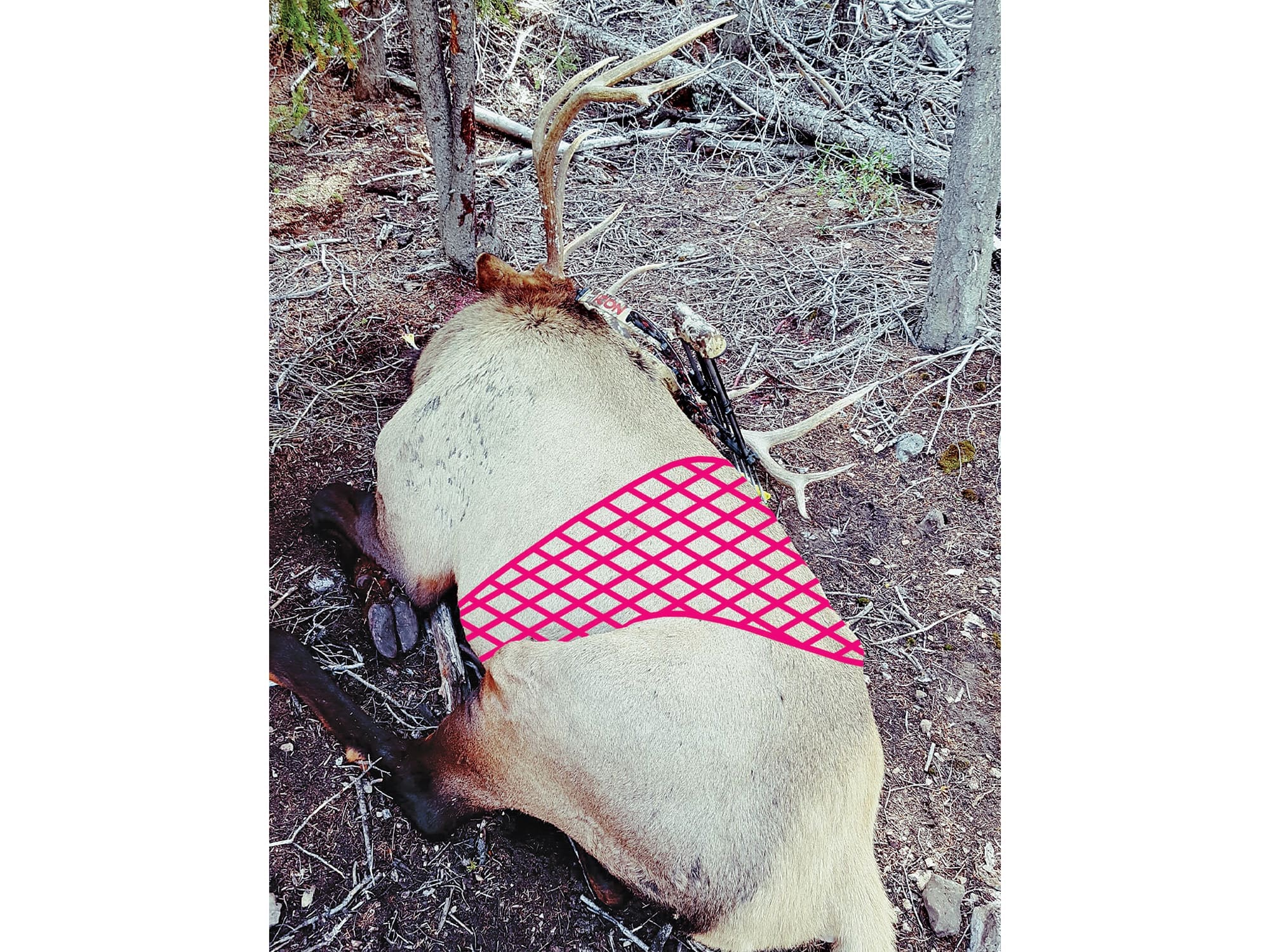
Home-Ec Refresher
To do this, you’ll need to be able to sew. Fear not, I’ve done this a few different times with several different people, and I’ve yet to find someone who can’t figure it out. All you need is a sharp knife and some paracord. To start, you’ll need to prepare your sewing table. I like to use balsam or spruce boughs if available, as they protect any exposed meat from the dirt. Lay several boughs on the ground, and lay the unskinned hind quarter on the boughs, flesh side up. You will not be deboning these quarters until you’re done dragging them, as the bones provide a purchase point for your rope.
Before sewing anything, it’s a good idea to remove a few chunks of meat from the center of the hind quarter, near where the ball joint is located. This flattens the quarter (think flattened KFC drumstick), which is helpful when dragging because otherwise, it may tend to roll. Now, flap the spare skin that is still attached to the quarter over the exposed flesh, and cut the excess skin off where it meets the hide on the other side. With your knife, create holes in each side of the hide to allow you to completely stitch the two sides together, completely protecting any exposed meat.
Remember to leave evidence of sex attached according to state regulations. Now, cut a slot in the lower leg between the bone and the Achilles tendon. Tie 3-4 feet of rope to the bone, and join the other end to a strong, 1-foot stick. Finally, cut the leg off just below the ankle joint to prevent it from kicking you while dragging.

That takes care of the hind quarters. I don’t carry a scale with me while hunting, but I suspect one of these hind quarters will now weigh about 60-70 pounds on an average bull. The rest of the meat goes in game bags and will be packed out in pack frames. Since I’m kind of particular, I like to itemize my meat by type. To me, there are two types of meat: steak and non-steak.
The backstraps, tenderloins, heart, and spare pieces removed from the hind quarters will go in the steak bag. The deboned shoulder and neck meat will go in the non-steak bag. I suspect each of these bags would weigh about 40-50 pounds on an average bull. Since I generally have about 15 pounds of gear and clothing with me, this leaves me with about 65 pounds on my back, and about 65 pounds being dragged. Believe it or not, the weight on your back seems to help with the dragging since you’ll have more momentum with the heavy pack.
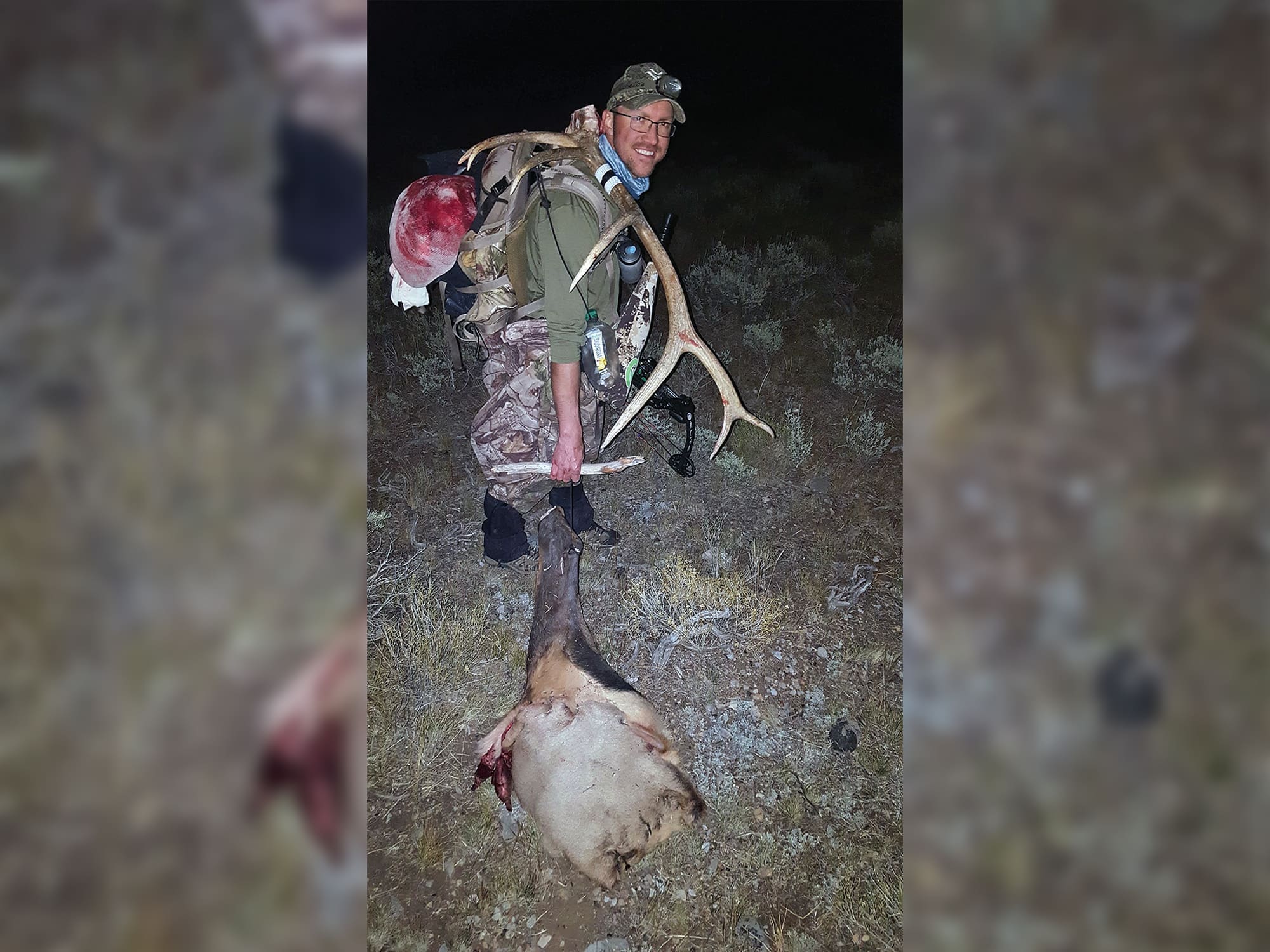
Consider the Situation
Now, this is where the terrain makes a big difference. If you’re in Blowdownville, you’ve just wasted your time. Dragging anything through blowdowns is a nightmare. You’d be much better off packing it all on your back. But if it’s mostly downhill and there’s a horse trail nearby, or the ground is relatively free from blowdowns and thick brush, the quarter will drag quite easily. In fact, I’ve found that dragging a quarter can actually help you hike down steep slopes with a heavy pack. With the weight behind you, the quarter serves as a sort of dynamic anchor, giving you and your loaded pack much more control on your descent.

It’s well worth noting that time and temperature are always important considerations when packing out an animal. Oftentimes, an elk isn’t recovered as promptly as John’s was. In that case, especially if it’s warm outside, it’s imperative to remove the hide quickly, allowing it to cool rapidly. If you find yourself in a situation of prolonged downtime (a few hours or more) and above-average temperatures, I would advise you to not try this method, and instead, separate all large muscle groups to expedite cooling.
Beyond that, I also realize this method isn’t for everyone or all places. Sometimes horses are the only answer. Float rafts seem like a great option if you can find a big stream and a readily available raft. But if the circumstances are right, which they often are, the knock-down, drag-out method will get you back to hunting quicker than any other method I’ve tried. In fact, I did make it back to the Elevator Shaft that same evening.
With all the commotion from earlier in the day, the elk had vacated the area… until just before dusk. Then, a distant bugle became louder and louder, until soon, there was the herd. The ivory-tipped, dark-racked 6x6 dwarfed the one John shot that morning, and I had to chuckle at my good fortune. On previous packouts, there was no way I would have been back in the mountains so soon to take this great bull. Ironically, the bull chuckled too, after I botched it for the second time in two days. Oh well, I’ve found that the “drag-out” is the easy part, it’s the “knock-down” part that’s difficult.


